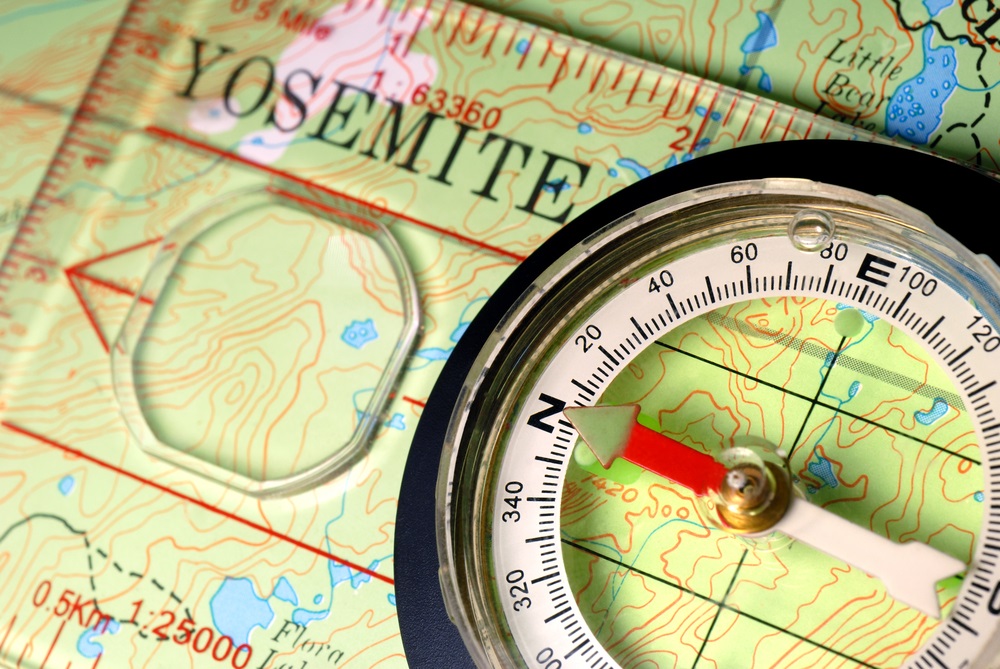Last Updated on October 11, 2022 by admin_hunter
Contour lines, also known as isarithm, isoline, or isopleth, are lines drawn on topographic maps to represent the actual ground elevation or depression. These lines join areas that lie within the same altitude above or below sea level.
In other words, if you were to travel along a specific contour line, the elevation would remain the same despite differences in the scenery. The difference in elevation or altitude between adjacent contour lines is what’s known as contour interval. It is abbreviated as CI.

The Importance of Elevation Data
Elevation values are always given relative to the sea level. So, the values can be positive or negative. It depends on how high or low the represented area is from the sea level (taken as 0’ or zero feet).
In the US, elevation is given in feet (ft). Other regions in the world usually use meters (m). The unit of conversion used is 1 m = 3.281 ft. For example, Leadville is the highest incorporated city in the US. It has an elevation of 10,152 ft. The lowest elevation in the world is -1,391 ft (1,391 feet below sea level). The point is an area located in the Dead Sea.
If planning for a hike, elevation data can be helpful. The ability to interpret contour lines and calculate contour intervals can reveal crucial topography details. For instance, you can easily identify overly steep slopes, depressions, and other features using your hiking map. Consequently, avoiding rough terrain becomes easy.
Moreover, elevation affects the climate and oxygen levels of a given area. Therefore, elevation data can be helpful when making decisions about where you’d like to live. Further, people who experience altitude sickness can use the information to make informed decisions before traveling, hiking, or moving to a new area.
Elevation data is also crucial in city modeling. It helps to make decisions on the best approaches when developing urban infrastructure to protect the environment. So, it promotes orderliness in developing rural areas as well as suburbs.
How to Calculate a Contour Interval (CI)
Studying the legend of a map is the easiest way to establish a contour interval. Unfortunately, sometimes the whole map isn’t available. So, the other option is to manually calculate the contour level to find the vertical elevation of a specific area.
It’s worth noting that not all contour lines are labeled with their respective altitudes. Otherwise, the map would be difficult to read since sometimes elevation lines can be pretty close to each other. On most maps, it’s the fifth contour line that features an elevation value. This fifth line is often darker and thicker than the rest. It’s known as an index contour.
Given that index contours are marked with their elevation, they are vital when calculating a contour interval. Here is how to go about it:
- The first step is to identify the marked elevation lines (index contour), then calculate the difference between the two index contours.
Illustration:
- Index line A has an elevation of 2000 feet above the sea level
- Index line B is marked 2200 feet above the sea level
- Calculate the difference between the two index contours, which will be 2200-2000 = 200
- Next, calculate the number of elevation lines between your two index contour lines. Add one to the figure obtained. For example, if the variety between elevation line indexed 2200 and that one marked 2000 is 9, add 1, which will make it 10.
- Using the above illustration and assuming the number of elevation lines is 10, divide the elevation difference (2000 feet) by 10 (variety in the number of contour lines) to find the contour interval, i.e., 200/10 = 20
- The contour interval is 20 or 20-unit contour levels.
Factors Affecting Choice of Contour Intervals in Topographic Maps
Surveyors first consider the most appropriate contour intervals before starting to work on any project. Here are the factors that affect the choice of contour intervals:
- Nature of the ground:If the variation levels like hills and ponds are high, then a higher CI (from 1m and above) is preferred. Lower CI (from 0.5m and below) works best with reasonably level terrains.
- The extent of the project:During the initial assessment, the survey leader may opt for higher CI (from 1m and above) to come up with a rough topography map. However, a lower CI (from 0.5m and below) is required for the actual execution of the project.
- Availability of resources:If time and other resources are in short supply, then a high CI is the best option. Conversely, low CI, like 0.5m, 0.1m, or less, is ideal when resources are plentiful.
What Are the Uses of Contour Intervals in Surveying?
Contour intervals are essential when there is a need to represent a large area on a small piece of paper. A higher contour level is used for the large areas and smaller contour levels for small areas. In addition, contour intervals make it easy to locate structures like bridges, dams, and roads on a topographic map.

Differences between a Contour Interval and a Horizontal Equivalent
As illustrated above, a contour interval helps find the vertical elevation of an area represented in a topographic map. In the same way, they can be used to calculate horizontal distance. For that reason, they’re also known as horizontal equivalent.
Below are the primary differences between the two:
- While contour intervals are used to find the vertical elevation of an area, the horizontal equivalent represents the horizontal distance.
- To calculate contour intervals on maps, it’s essential to have at least two indexed elevation lines. Therefore, there is no need for a scale or any measurements. Conversely, you can’t calculate the horizontal equivalent without a scale. The distance on the map is often calculated then the scale is used to find the actual figures on the ground.
- Contour intervals are usually a constant figure. On the flip side, the horizontal equivalent is affected by the slope—the wider the horizontal distance, the gentler the gradient.
Conclusion
If planning for a hike or a hunting escapade, it is vital to be able to interpret contour lines and calculate contour intervals. It will help you plan for the route to take and anticipate and affect your body due to elevation change.

